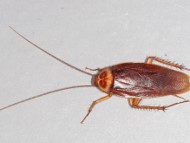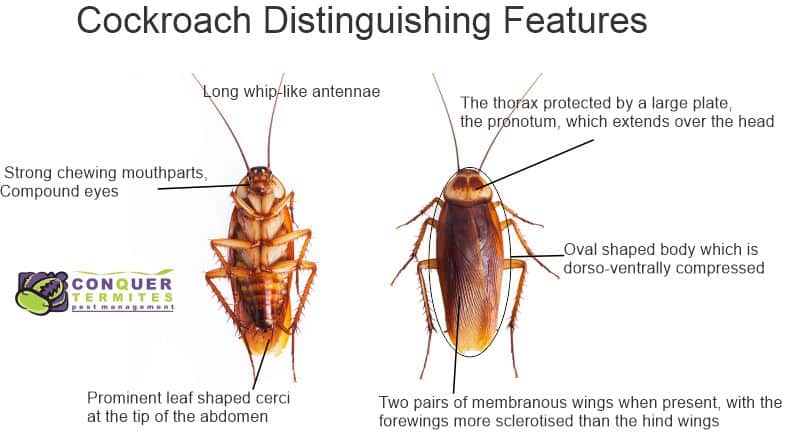How to get rid of cockroaches
Have you gone into the kitchen late in the night and turned on the light to be greeted by a few cockroaches scurrying away? Freaked out? What’s the best treatment to kill cockroaches?
Why are they a problem?
Cockroaches can quickly spread disease in the household, contaminating the environment by leaving behind bacteria and droppings. Common types of bacteria that cockroaches may spread are salmonella and toxoplasmosis. And they look yucky.
How to prepare and how to treat cockroaches
Homeowner
Empty bins regularly and ensure they have lids
Clear away food sources – do dishes daily, cover food or put it away, wipe benches clean (especially under kettle & toaster)
Clean pet bowls regularly.
Seal cracks and crevice where cockroaches like to harbour (No gaps is great!)
Conquer Termites
Apply gel bait to wet area cupboards – bathroom, kitchen, laundry
Apply a dust treatment under large appliances such as the dishwasher, fridge, washing machine etc
Dust in cracks and crevices where cockroaches like to harbour
Spray skirting boards with a low-odour residual chemical that only targets insects and is completely safe for pets and humans
The cockroach life cycle
Cockroaches undergo an incomplete (or gradual) metamorphosis, with the juvenile stages being similar in appearance to the adult form, apart from the presence of wings. Female cockroaches produce an egg case (ootheca) after mating, and they either deposit this sometime before or immediately before the baby (nymph) cockroaches emerging.
According to the species involved, there are several juvenile stages lasting from six to twelve months. Adults can live from three to twelve months. Juveniles and adults live together in aggregations, with up to 75% of the aggregation consisting of juveniles.
All stages have similar mouthparts and feed upon identical foods. This makes it easier for us when we apply abaiting treatment.
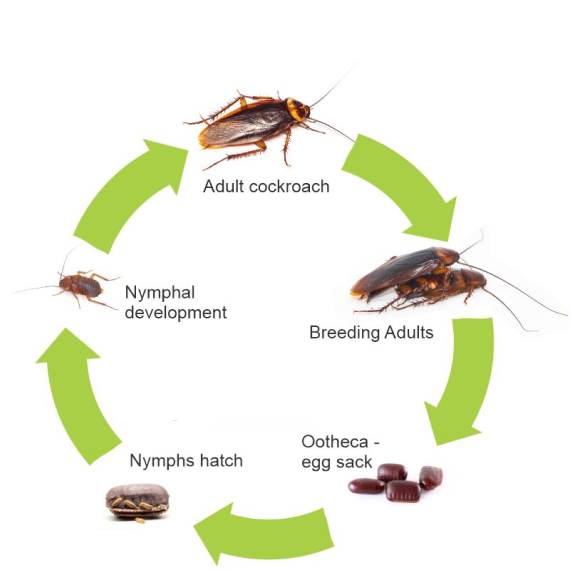
As cockroaches living in and around buildings require food, water and shelter sites, reducing the availability of resources will likely lead to reductions in population size. The following practices will make buildings less suited to infestation:
1. Clean-up after food handling should be immediate, thorough and regularly carried out. Dishes and utensils should not be left unwashed overnight. Pets’ feeding bowls should not be left unwashed for periods. Clean-up of offices, clubs, bars, and so on should, where possible, proceed immediately when the day’s activities are finished, so that food contaminated surfaces are not available overnight.
2. Water availability should be reduced where possible. Unnecessary containers with water, accumulations of water from cleaning activities, leaky taps or pipes should all be checked.
3. Foods should be stored in tight cockroach-proof containers. Cereals, flours, meats and all other food materials should be kept in a refrigerator or in containers that can be tightly closed.
4. Food storage involves:
- inspection of incoming stock;
- regular stock rotation;
- sound food-storage practices, whereby food is stored above ground level and, where appropriate, away from contact with walls.
5. Garbage should be stored in tightly closed containers.
6. Where feasible, cracks and crevices that may harbour cockroaches should be filled in. Entry points (eg around pipes) through floors or walls should be blocked off to lessen the possibility of re-infestation or harbourage.
7. Equipment in food-handling areas should, where possible, be located above floor level to facilitate easy and thorough cleaning and thus avoid the build-up of wastes underneath.
8. Reasonably regular clean-up of ‘longer term’ build-up of waste foods (eg grease accumulation around stoves and vents, or spilt food materials at backs of shelves) should be carried out. Vacuuming of shelves and cupboards will reduce the build-up of food particles in cracks and crevices. Usually, a thorough survey of the building will reveal the extent to which practices and procedures need to be modified. Where very poor sanitation and hygiene practices exist, chemical treatments will be limited in their effectiveness.
The cockroach life cycle
Cockroaches undergo an incomplete (or gradual) metamorphosis, with the juvenile stages being similar in appearance to the adult form, apart from the presence of wings. Female cockroaches produce an egg case (ootheca) after mating, and they either deposit this sometime before or immediately before the baby (nymph) cockroaches emerging.
According to the species involved, there are several juvenile stages lasting from six to twelve months. Adults can live from three to twelve months. Juveniles and adults live together in aggregations, with up to 75% of the aggregation consisting of juveniles.
All stages have similar mouthparts and feed upon identical foods. This makes it easier for us when we apply abaiting treatment.

German cockroaches (Blattella germanica)
These are the cockroaches that get crazy numbers in your kitchen. They have a very rapid breeding cycle and can multiply their population in a few weeks.
They prefer a warm, moist area and are frequently found in kitchens and bathrooms.
They are tan or light brown coloured with two dark parallel streaks running from the head to the base of the wings. They are 1.2 to 1.5 cm in length when adult.
Female cockroaches carry their ootheca with them during the germination rather than depositing it like other species. They have wings but don’t take to flight.
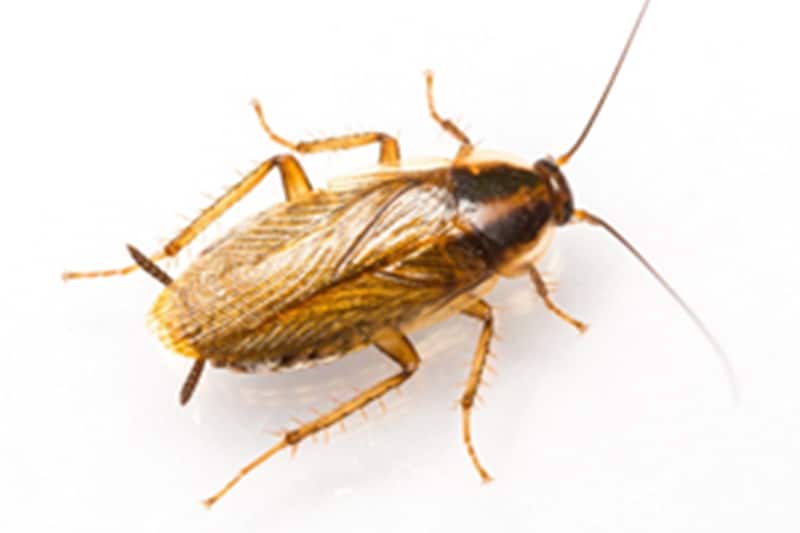
Australian Cockroaches (Periplaneta australasiae)
These are the scary cockroaches that crawl into to your home at night from the outside. Unlike other cockroaches, they normally feed on plants and feed on different organic substances, including decaying substances.
They don’t normally harbour in your house.
Australian cockroaches are a large species of cockroaches. They are winged and can be about 3 to 4 cm in length. They are dark brown in colour.
Australian cockroaches are very similar to American cockroaches but can be distinguished by a yellow margin on the thorax and yellow streaks on the sides near the wing base.
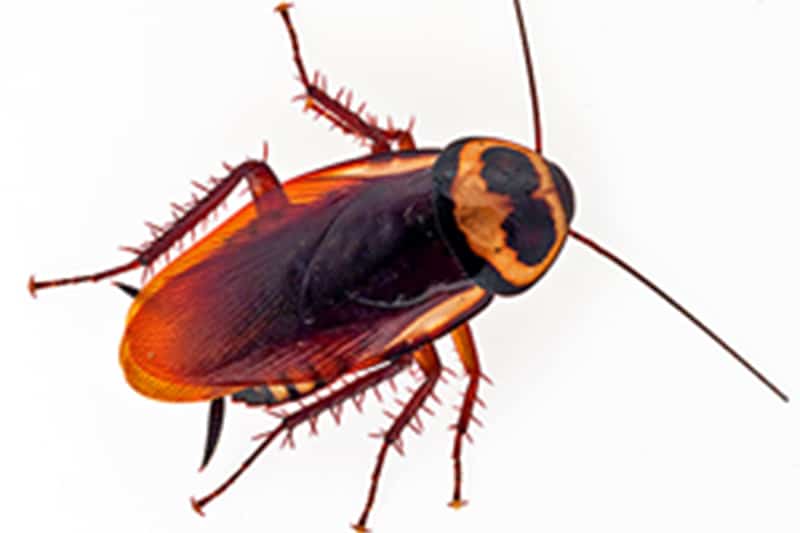
American Cockroaches (Periplaneta americana)
These are the big scary cockroach that flies into your face at night and scurries over your pet feeding bowls.
They are large roaches, ranging in length up to 4 cm. They prefer dark, moist, warm areas like sewers and drains. They are also commonly found in basements, steam tunnels, boiler rooms, rubble foundations, and similar places.
Often, they aren’t even noticed until a light is turned on, and they dash away rapidly. Both sexes have working wings and at least some flight capability, but oddly enough, they seldom fly.
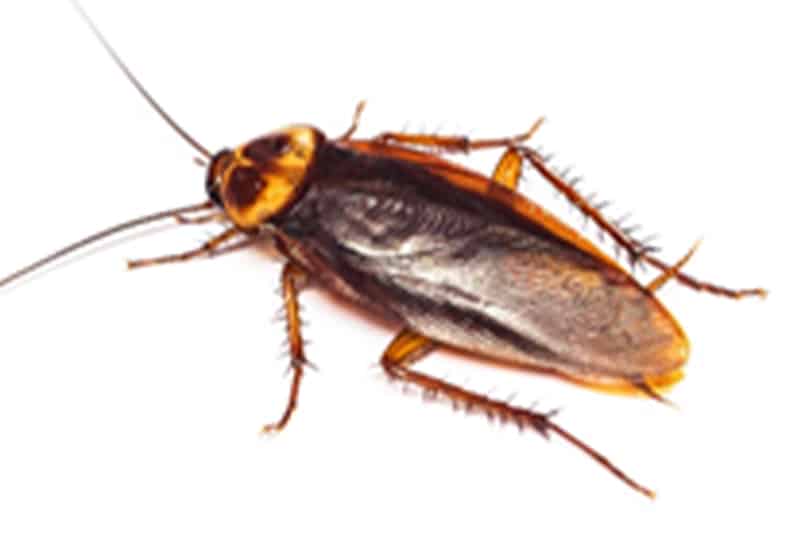
Brownbanded Cockroaches (Supella longipalpa)
These cockroaches can survive a long time without access to water. Compared to other common roaches (such as the German cockroach), they prefer drier conditions. They’re commonly found in bedrooms (especially in cabinets and night tables), in closets, behind peeling wallpaper, and inside electrical and electronic equipment.
They are 1.5 cm in length as adults. Adults of both sexes have wings, although only males fly. Brown-banded cockroaches have two light-coloured bands running across the base of their wings, hence the name “brown-banded cockroach”.
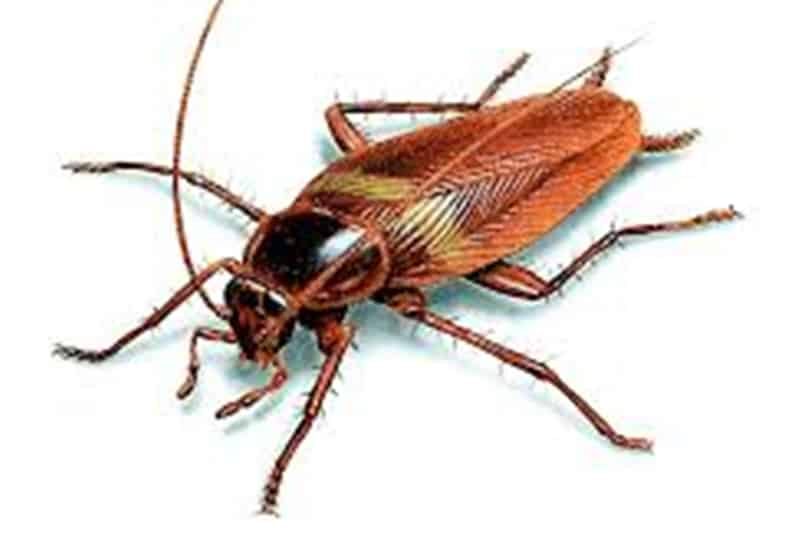
Oriental Cockroach (Blatta orientalis)
Dark brown to black. Female has much-reduced wings size, present as wing buds. Male has wings that usually cover most, but not all, of the abdomen. 2 to 2.5 cm.
Prefers relatively cool conditions. May infest indoors or outdoors. It may be found in cool, damp cellars and subfloors, around drains, inside walls, in and around equipment, under garden debris, in dumps etc. Does not fly.
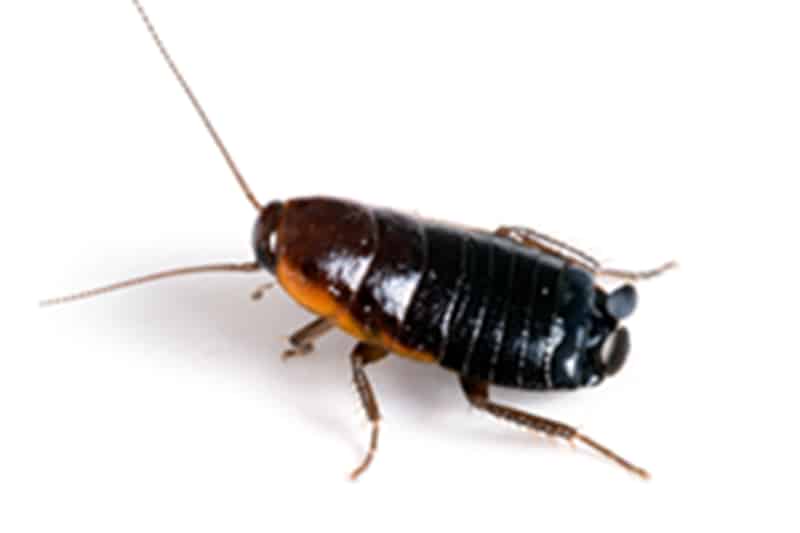
American
Reddish-brown in colour – upper thorax (pronotum) having pale border
About 35 to 40 mm in length when adult
Flies in warmer climates
Favours moist areas – sewers, drains
Prefers these outdoor areas but will enter buildings
Nocturnal habit
